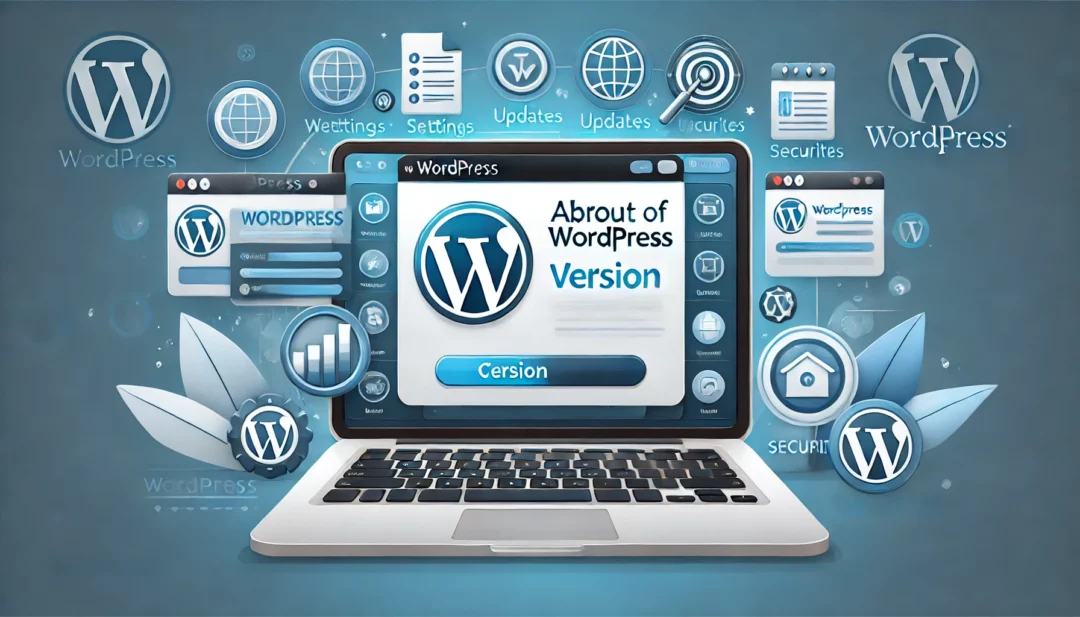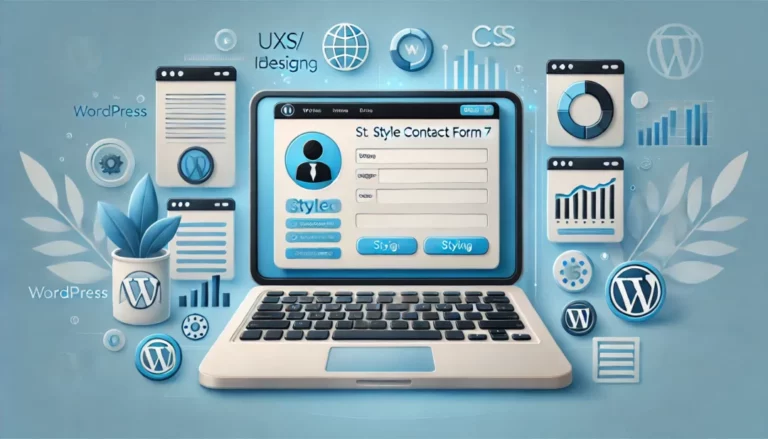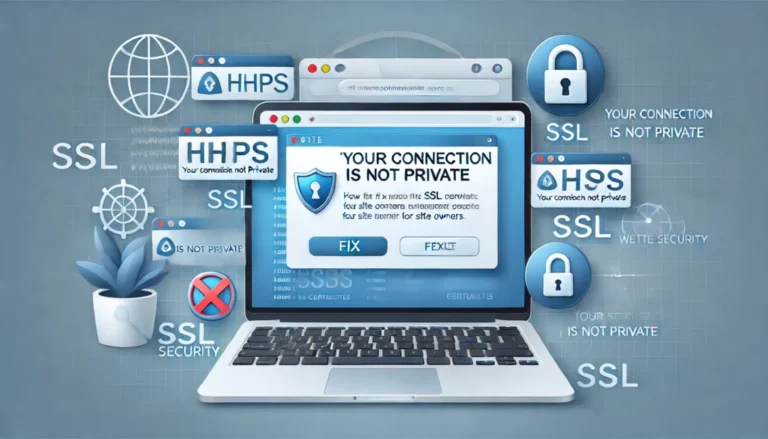
Knowing which version of WordPress you’re using is crucial for maintaining your website’s security and compatibility. Whether you’re troubleshooting an issue, updating plugins, or ensuring your site is up to date, identifying your WordPress version is a quick and simple process.
You’ll find multiple ways to check it, from logging into your dashboard to inspecting your site’s source code. Each method takes just a few moments and doesn’t require advanced technical skills. By following these straightforward steps, you’ll have your WordPress version at your fingertips in no time.
Why Knowing Your WordPress Version Is Important
Understanding your WordPress version enhances the security and functionality of your site. Each version includes updates that patch vulnerabilities, ensuring your site remains protected against threats. Running an outdated version increases the risk of malware and hacking attempts.
Plugin and theme compatibility depends on your version. Developers update plugins and themes regularly to align with the latest WordPress releases. Using incompatible versions can lead to broken features or performance issues.
Troubleshooting becomes easier when you know your version. Support teams for plugins, themes, or hosting often require this information to offer accurate solutions. Without it, diagnosing problems can take longer.
Staying informed improves site optimization. Regular updates include new features that enhance your site’s speed, design, and user experience. Missing updates means losing out on potential improvements for your visitors.
Methods To Check Which Version Of WordPress You Are Using
Identifying your WordPress version is essential for maintaining optimal security and compatibility. Use the following methods to locate this information quickly and effectively.
Checking From The Admin Dashboard
- Log in to Your Dashboard
Access your WordPress site by logging into the admin area (usually at yourdomain.com/wp-admin).
- Locate the Version Number
Scroll to the bottom of the dashboard’s home page. The WordPress version typically appears in the footer section.
- Check Updates Section
Navigate to “Dashboard > Updates”. Here, the current version is displayed alongside prompts for available updates.
Examining The Page Source Code
- Open Your Website in a Browser
Visit the homepage of your WordPress site.
- Inspect the Page Source
Right-click anywhere on the page and select “View Page Source” or press Ctrl + U (Windows) or Command + U (Mac).
- Search for the WordPress Generator Tag
Use Ctrl + F (Windows) or Command + F (Mac) to search for “generator”. If enabled, a meta tag similar to <meta name="generator" content="WordPress x.x.x"> will appear, showing the version number.
Note: Some sites disable this tag for security.
Accessing The Version File Manually
- Connect to Your Website Files
Use an FTP client like FileZilla or your hosting provider’s file manager to access your site’s files.
- Locate the Version File
Find the wp-includes folder in the WordPress root directory and open the version.php file.
- Identify the Version
Search the file for the line $wp_version = 'x.x.x';. The number in quotes is your WordPress version.
Tip: Changing this file directly is not recommended, as it can lead to errors.
- Choose a Trusted Tool
Several online tools, like WP Detector or WhatCMS, can identify your WordPress version.
- Enter Your URL
Visit the chosen tool’s website and input your WordPress site’s URL.
- Review the Results
The tool scans your site and provides details, including the WordPress version if detectable.
Note: Public tools may not always retrieve the version if the meta tag is disabled or masked.
Troubleshooting If Version Detection Fails
If you’re unable to determine your WordPress version through the standard methods, alternative troubleshooting steps can help. This ensures you can gather the necessary information without excessive technical complexity.
1. Check the Readme.html File
Locate the readme.html file in your WordPress installation directory.
- Access your website files using an FTP client or your hosting control panel’s File Manager.
- Search for the
readme.htmlfile within the root directory. - Open the file, and look for the version number near the top.
If this file has been deleted for security reasons, proceed to another method.
2. Access the WP-Includes Folder
Identify the version by examining the core files in the wp-includes folder.
- Use an FTP client to navigate to the
wp-includesfolder. - Locate and open the
version.phpfile. - Search for the line containing
$wp_version. The version number is displayed in plain text, such as6.3.1.
This method requires access to your site’s file system.
3. Consult Hosting Provider
Contact your hosting provider if self-checks fail.
- Most hosting support teams can provide details regarding your WordPress installation.
- You can request them to confirm the version or assist with troubleshooting permissions if access is restricted.
This is a useful option when technical issues prevent standard file access.
4. Inspect Backup Files
Retrieve the WordPress version from a previously saved backup.
- Access your website backup stored locally or on cloud storage.
- Open the backup’s
readme.htmlorversion.phpfiles. - Confirm the version number from these files.
This method ensures version detection without accessing live site files.
- Modified Source Code: Customizing core WordPress files can remove version identifiers.
- Deleted System Files: Security measures may cause file removal, hindering detection.
- Restricted File Access: Limited permissions can prevent entry to system files or folders.
Apply these strategies when the standard approaches for version identification aren’t effective.
Tips For Maintaining Your WordPress Site
Proper maintenance of your WordPress site ensures optimal performance, security, and user experience. Implementing best practices helps prevent downtime and keeps your site running smoothly.
Keeping Your WordPress Updated
Regular updates to your WordPress core, themes, and plugins protect your site from vulnerabilities. Each update includes bug fixes, security patches, and performance improvements.
- Enable Automatic Updates: Turn on automatic updates for the WordPress core to ensure your site stays up-to-date with minimal effort. Navigate to the Updates section in your dashboard to manage this setting.
- Monitor Theme and Plugin Updates: Check for updates weekly. Outdated plugins or themes can expose your site to threats. Find updates under Plugins or Appearance > Themes in your dashboard.
- Verify Compatibility: Confirm that themes and plugins are compatible with the latest WordPress version before applying updates to prevent site disruptions.
Backing Up Your Website Regularly
Regular backups ensure you can restore your site quickly in case of data loss or cyberattacks. Use reliable tools to create and automate backups.
- Use Backup Plugins: Install plugins like UpdraftPlus or BackupBuddy to schedule full or incremental backups. Store backup files on external platforms like Google Drive or Dropbox.
- Frequency of Backups: Adjust backup frequency based on your site’s activity. For busy sites, consider daily or twice-weekly backups, while less active sites can manage with weekly backups.
- Test Restorations: Periodically restore backups in a staging environment to confirm they’re functional and complete.
Conclusion
Knowing your WordPress version is a small but crucial step in managing your website effectively. It keeps your site secure, functional, and optimized for the best user experience. By staying informed and regularly updating your WordPress installation, you can protect your site from vulnerabilities and take advantage of new features.
Incorporate these practices into your routine to ensure your website remains reliable and performs at its best. A little effort now can save you from potential issues down the road while keeping your site running smoothly for your visitors.
Frequently Asked Questions
Why is it important to know your WordPress version?
Knowing your WordPress version is crucial for ensuring website security, compatibility, and performance. It helps protect your site from vulnerabilities, ensures plugins and themes work correctly, and simplifies troubleshooting. Additionally, staying updated allows you to benefit from new features and enhancements introduced in newer versions.
How can I check my WordPress version from the dashboard?
Log in to your WordPress admin dashboard. You can find the version number at the bottom of the dashboard page or in the “Updates” section under the “Dashboard” menu.
Can I find my WordPress version without logging in?
Yes, you can check your WordPress version by viewing the page source of your homepage. Look for the WordPress generator tag in the HTML code, which usually indicates the version.
What if I can’t detect my WordPress version using standard methods?
If common methods fail, try accessing the version.php file in the wp-includes folder through an FTP client. You can also check the readme.html file within the WordPress installation directory or ask your hosting provider for assistance.
Why should I update my WordPress version regularly?
Updates enhance security, fix bugs, and introduce new features, ensuring better performance and usability. Regular updates prevent vulnerabilities that hackers may exploit and ensure compatibility with themes and plugins.
Do I need technical knowledge to find my WordPress version?
No, finding your WordPress version is simple and does not require advanced technical skills. Methods like using the dashboard or inspecting the page source code are user-friendly and easy for anyone to follow.
Can using an outdated WordPress version cause issues?
Yes, outdated versions can lead to security vulnerabilities, plugin/theme compatibility issues, and poor site performance. Hackers are more likely to target older versions, which lack the latest security patches.
What tools can I use to identify my WordPress version?
You can use tools like WP Detector and WhatCMS to identify your WordPress version. Simply enter your site’s URL, and the tool will analyze the version. However, accuracy may vary based on site configurations.
How often should I update my WordPress themes and plugins?
Check for theme and plugin updates weekly, but always verify their compatibility with your WordPress version before applying them. This prevents disruptions and ensures your site functions smoothly.
Why are regular backups important for WordPress sites?
Regular backups allow you to restore your site quickly in case of data loss, hacks, or technical failures. Use reliable backup plugins, adjust frequencies based on activity, and periodically test restoration to ensure backups are effective.






